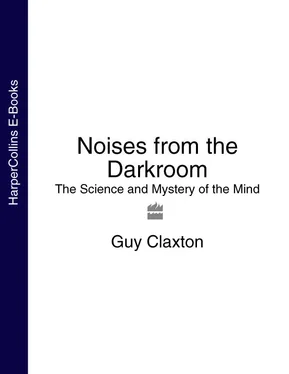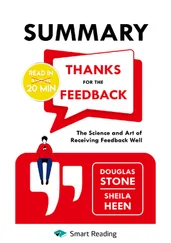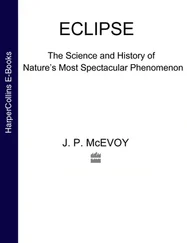We do not see this filter because we see through it. It is the unacknowledged background against which our mental life stands out in relief. We say ‘You make me mad’, without ever pausing to inspect the theory of emotion which this dubious claim demands. We say ‘I’m sorry – I wasn’t myself’, without noticing what a curious view of personality is being implied. We say ‘I changed my mind’, without wondering who exactly it is that changed what (or what it was that changed whom). We try in our courts to decide whether a mass murderer is mad, only rarely doubting the sanity of the question itself.
The cornerstone of contemporary folk psychology is the assumption that the mind is see-through: that when we look inward, through the window of introspection, we see what is there. We imagine the mind to be like a clock in a glass case, with all its important workings available for inspection by its one privileged owner. We think we know ourselves already, or could know ourselves if we chose, if not completely, then at least intimately and directly. This is the cardinal misconception, and its appreciation forms the starting point for the exposé with which this book is concerned.
Contrary to popular opinion, the human mind is a closed book. The room behind the eyes is forever dark. No access is possible, either by thinking or via the senses – for thoughts and experiences are the produce of this obscure factory, not glimpses of its operation. As with the manufacture of Cointreau or Tabasco, what goes on behind the scenes is a jealously guarded trade secret. All we get to do is taste the concoction; to the world of the concocter we are not privy at all. In the mind feelings are fabricated, thoughts are marshalled, perceptual pictures are painted. But of the painter and the engineer we have no idea.
Or rather, we can only have ideas. We think we are looking at ourselves through transparent windows. We think that consciousness gives us privileged access to our process and our nature: that the dark-room of the mind is light and airy, and our natural home. We think that the stories it tells about itself are true. Yet we are not looking through clear glass. We are looking at a screen on which some rather special products of the mind’s activity are back-projected. Behind the screen there is a director producing a constant stream of interwoven films, one of which – one recurring theme – concerns the work of a director making a constant stream of interwoven films. As in Frederico Fellini’s masterpiece 8 1/ 2, we are not seeing the director at work, but only the director’s partial and fictionalized view of a hypothetical director at work. We are invited to believe that the fictional and factual Fellinis are one and the same. But we have no right to do so, and we can never know the degree to which they really correspond—for the real Fellini remains always beyond the filmgoers’ ken.
If the images that the mind created of itself were truthful – if the pictures projected onto the blind showed what we would actually see if the blind were raised – then nothing would be lost by mistaking one for the other. If appearance matches reality, the distinction becomes unimportant, indeed loses its meaning. But if the mind dissembles, then the consequences of buying its pronouncements may be more interesting, perhaps more serious. If the mind tells you that you are 5 feet 3 inches tall, and take a 14 inch collar, when you are really 6 foot and a 16, then you are going to bang your head on a lot of lintels, and buy a lot of clothes that leave you with cold ankles and restricted breathing. Like the man suffering from a perpetual headache, the only doctor who is going to be able to help you is the one who persuades you to buy bigger shirts.
Inside the dark-room, inscrutable though it is, are collected all the data and beliefs that give life its meaning and construct its purpose. Buried there are the files that tell us how to be happy, who and what to care about, when to react and when to keep still; the programs that enable us to understand language, to record the past, to spin fantasies, and to tell the ‘real’ from the ‘imaginary’. Manifesting indirectly, in attractions and expectations, spontaneous allegiances and solitary dreams, there are the casts of mind that tell us how to recognize a human being who will take care of us, or give us sexual pleasure; how to feel when Arsenal lose the Cup (‘Ecstatic’, ‘Destroyed’, ‘What’s “arsenal”? What “cup”?’) And somewhere right at the centre of operations is the unarticulated specification of what it means to be a person: what kind of a being is a human being. From the frisson of an impulse buy, to the image of a Good Death, all is fashioned by the back-room boys and girls of the human mind.
There are three potential sources of information which could give us cause to doubt this picture: everyday experience, the reports of the mystics, and science. What about the many occasions on which we have suddenly ‘come to’, and realized that we have been carrying out complicated tasks requiring accurate perception, subtle action, and intelligent judgement – driving, say, or even walking along a crowded pavement – without any conscious knowledge or memory? While consciousness has been occupied with important affairs unconsciousness seems to have been coping very nicely on its own. What about the times when we have reacted instantaneously to a sudden event—a dog runs under the wheels, a fierce backhand from an opponent comes hurtling at your face – and before the conscious mind has even taken in what is happening the brakes are applied, or a winning volley is played? The excitement may be all over before consciousness comes puffing along with its self-centred commentary and its post hoc efforts to take the credit or shift the blame.
For 2,500 years at least there has been another source of evidence for the power of the unconscious: the writings of the mystics. As we shall see, they have couched their experiences in very different terms, drawing on whatever images were provided by their diverse cultures in their attempts to convey what they have seen. But time and again they describe their experience in terms of an abrupt shift in their relationship to the unconscious. Using theistic imagery, as most of them in the Western world were bound to do, they claim a direct encounter with a God who is, paradoxically, absolutely unknowable; whose being is to be found not in some remote heaven, but at a person’s innermost core, prior to any form of knowing or conceptualization. From ‘The Cloud of Unknowing’ to Rilke’s ‘no matter how deeply I go into myself my God is dark’, they agree that the most profound experience of truth is to be found by diving into the silent spring, the well-head, from which all consciousness arises. If you can but let yourself be sucked into the Black Hole at the centre of your being – if you can walk boldly into the darkroom – then an enormous weight of anxious, self-centred concern will drop away, and a light and kindly wisdom will immediately emerge to take its place.
The third and most recent source of information about the nature of mind comes from science; not the questionable analogies that have been drawn between mysticism and the speculative world of subatomic physics, but the emerging, biologically based investigations of systems theory, human evolution and the new hybrid discipline, comprising psychology, neuroscience, philosophy and artificial intelligence, known as ‘cognitive science’. What is emerging from this joint enterprise requires a startling reappraisal of the human mind; one which leads us to see the experiences of the mystics as no more and no less than a spontaneous ‘correction’ of the working of the brain.
Читать дальше












